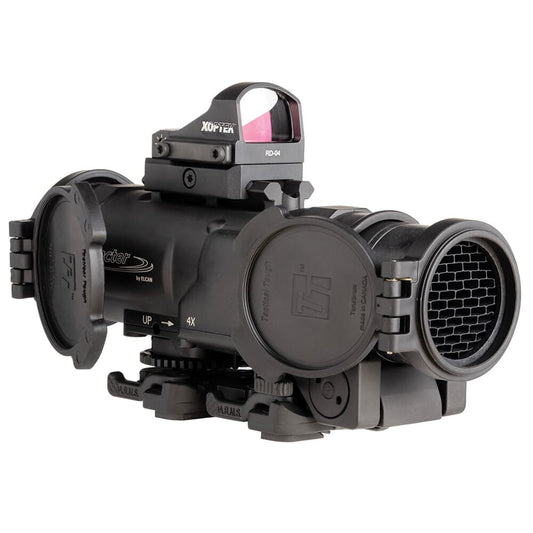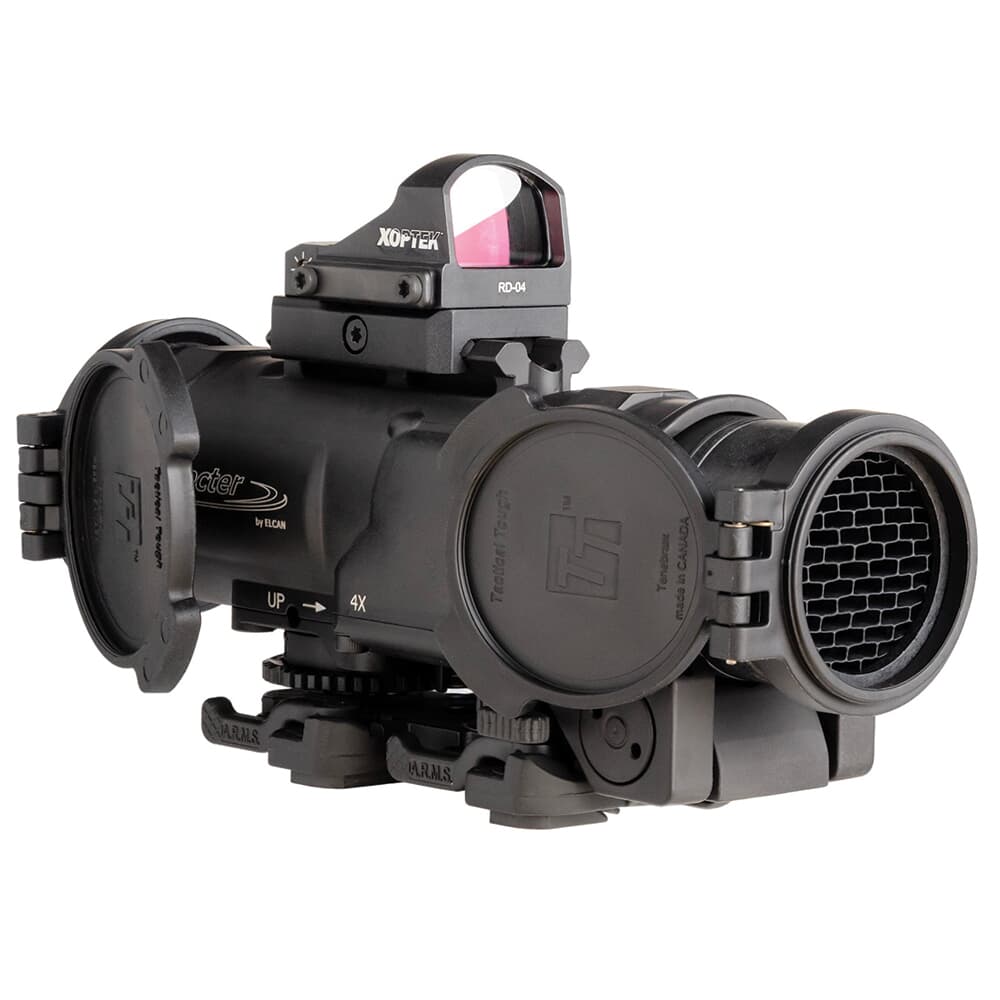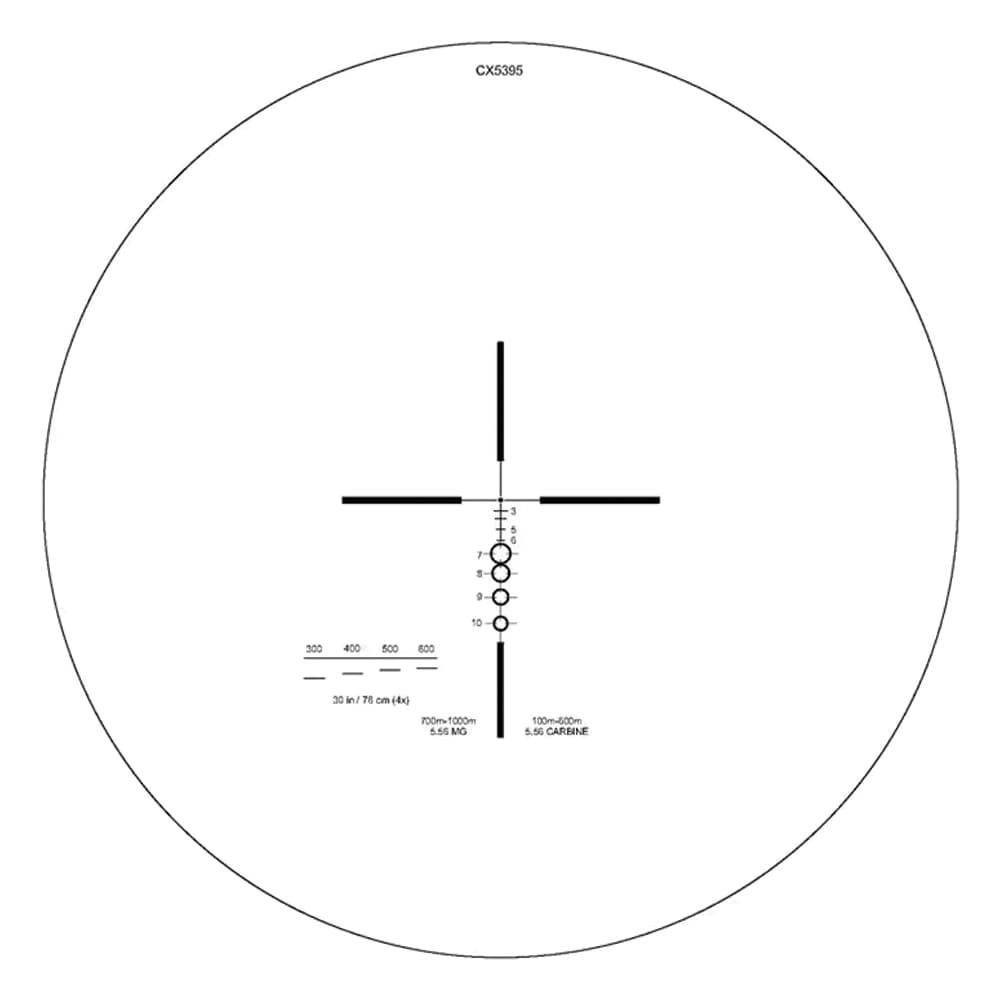

Elcan SpecterDR 1x/4x 5.56mm Riflescope provides versatile magnification options with a quick transition between 1x and 4x settings. This feature is essential for scenarios ranging from close-quarter engagements to long-range precision shots. The illumination function enhances visibility, making it easier to acquire targets in various lighting conditions. The scope is built with an optimized optical path that maintains consistent eye relief, ensuring comfort during extended shooting sessions.
The robust design includes the A.R.M.S. MK-II Mount for secure attachment, allowing tool-free tension adjustments for stability. Additionally, the included XOPTEK Micro Reflex sight serves as a reliable backup aiming solution. With a lightweight construction of just 23.1 ounces, this scope is ideal for tactical use and outdoor adventures, enabling users to carry it comfortably for long periods without compromising on performance.
Features:
- INSTANT MAGNIFICATION SWITCHING for seamless transitions between 1x and 4x.
- ILLUMINATION FUNCTION enhances target visibility in varied lighting conditions.
- OPTIMIZED OPTICAL PATH ensures consistent eye relief for comfortable viewing.
- A.R.M.S. MK-II MOUNT with tool-free tension adjustments for a secure fit.
- XOPTEK MICRO REFLEX SIGHT provides a reliable backup aiming solution.
- GENEROUS FIELD OF VIEW for improved situational awareness at both magnifications.
- LIGHTWEIGHT DESIGN at 23.1 ounces, perfect for extended use.
- FIRST FOCAL PLANE RETICLE offers accurate range estimation for various distances.
Technical Specifications Table
| Specification | Details |
|---|---|
| SKU | DFOV4-B146-C10-X3 |
| Magnification Range | 1x to 4x |
| Exit Pupil | 8mm |
| Eye Relief | 70mm |
| Field of View | 34.2 ft @ 100 yds (4x), 146.3 ft @ 100 yds (1x) |
| Scope Weight | 23.1 ounces |
| Length | 6.02 inches |
| Turret Adjustment | 1/2 MOA |
What’s in the Box?
- Elcan SpecterDR 1x/4x Rifle Scope
- Anti Reflection Device
- 3MOA XOPTEK Micro Reflex Sight
Customer Reviews
"This scope has transformed my shooting game. The clarity and ease of switching magnification are unmatched!"
"Perfect for both close encounters and precision targets. Highly recommend!"
FAQ
How does the Elcan SpecterDR perform in low-light conditions?
The illumination feature of the SpecterDR ensures that you have a clear sight picture even in low-light settings, enhancing your aiming accuracy significantly.
Is the scope durable for rugged use?
Absolutely! The Elcan SpecterDR is built to withstand harsh conditions, making it an excellent choice for tactical applications and outdoor adventures alike.
Similar Models
Looking for more exceptional optics? Explore our extensive Elcan lineup, including models like the Elcan SpecterDR 1-6x for variable magnification and the Elcan SpecterDR 1-8x for versatile shooting options. Discover the full collection tailored to elevate your shooting experience!
You May Also Like
Here’s some of our most similar products people are buying. Click to discover trending style.







